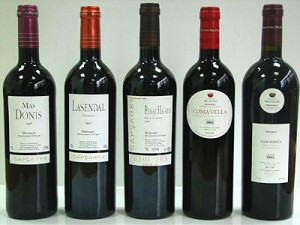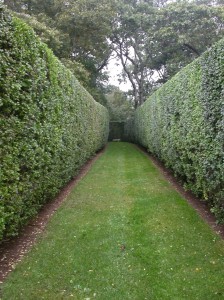Critical Thinking — Ripped From The Headlines!
Daniel Kahneman, the psychologist who won the Nobel prize in economics, reminds us that, “What you see is not all there is.” I thought about Kahneman when I saw the videos and coverage of the teenagers wearing MAGA hats surrounding, and apparently mocking, a Native American activist who was singing a tribal song during a march in Washington, D.C.
The media coverage essentially came in two waves. The first wave concluded that the teenagers were mocking, harassing, and threatening the activist. Here are some headlines from the first wave:
ABC News: “Viral video of Catholic school teens in ‘MAGA’ caps taunting Native Americans draws widespread condemnation; prompts a school investigation.”
Time Magazine: “Kentucky Teens Wearing ‘MAGA’ Hats Taunt Indigenous Peoples March Participants In Viral Video.”
Evening Standard (UK): “Outrage as teens in MAGA hats ‘mock’ Native American Vietnam War veteran.”
The second media wave provided a more nuanced view. Here are some more recent headlines:
New York Times: “Fuller Picture Emerges of Viral Video of Native American Man and Catholic Students.”
The Guardian (UK): “New video sheds more light on students’ confrontation with Native American.”
The Stranger: “I Thought the MAGA Boys Were S**t-Eating Monsters. Then I Watched the Full Video.”
So, who is right and who is wrong? I’m not sure that we can draw any certain conclusions. I certainly do have some opinions but they are all based on very short video clips that are taken out of context.
What lessons can we draw from this? Here are a few:
- Reality is complicated and — even in the best circumstances — we only see a piece of it.
- We see what we expect to see. Tell me how you voted, and I can guess what you saw.
- It’s very hard to draw firm conclusions from a brief slice-of-time sources such as a photograph or a video clip. The Atlantic magazine has an in-depth story about how this story evolved. One key sentence: “Photos by definition capture instants of time, and remove them from the surrounding flow.”
- There’s an old saying that “Journalism is the first draft of history”. Photojournalism is probably the first draft of the first draft. It’s often useful to wait to see how the story evolves. Slowing down a decision process usually results in a better decision.
- It’s hard to read motives from a picture.
- Remember that what we see is not all there is. As the Heath brothers write in their book, Decisive, move your spotlight around to avoid narrow framing.
- Humans don’t like to be uncertain. We like to connect the dots and explain things even when we don’t have all the facts. But, sometimes, uncertainty is the best we can hope for. When you’re uncertain, remember the lessons of Appreciative Inquiry and don’t default to the negative.
Critical Thinking, Framing, and Red Wine

What else should I have?
I like wine, especially red wine. My tastes range from elegant to earthy. In fact, I’m not terribly discriminating – I like to sample them all.
I also feel the need to justify my red wine indulgences. So I’m always looking for news about the positive health effects of drinking red wine. (This is a classic case of System 2 rationalizing a decision that was initially made – for entirely different reasons — in System 1. My System 1 made the decision; my System 2 justifies it.)
As you may know, there’s plenty of good news about red wine and good health. Generally, drinking red wine is associated with better health and longer life. It’s a J-shaped curve, “…light to moderate drinkers have less risk than abstainers, and heavy drinkers are at the highest risk.” Drink a little bit and you get healthier; drink too much and you get unhealthier.
Is there a cause-and-effect relationship here? It certainly hasn’t been proven. All we’ve been able to show so far is that there is a correlation. A change in one variable is correlated to a change in another variable. Just because variable A happens before variable B, doesn’t mean that A causes B. (That would be the post hoc, ergo propter hoc fallacy as the President points out in West Wing).
Yet many scientists have assumed that there is a cause-and-effect relationship and framed their studies accordingly. The typical approach is to break down the various elements of red wine to isolate the ingredient(s) that cause the beneficial health results. Is it ethanol? Is it resveratrol? Notice the assumption: there is something in the wine that causes the beneficial health result. The studies are narrowly framed.
Is this good critical thinking? Maybe not. Maybe we’re framing too tightly and assuming too much. Maybe there’s a third variable that causes us to drink red wine and be healthier.
I started thinking about this when I stumbled across a study conducted in Denmark more than a decade ago. The Danish researchers didn’t study wine. Rather, they looked at human behavior. More specifically, they looked at 3.5 million grocery store receipts.
The Danish researchers asked three interrelated questions: 1) What do wine drinkers eat? 2) Is this different from what non-wine-drinkers eat? 3) If so, could the differences in overall diet be the cause of the health effect?
The researchers looked at several specific combinations:
- What else did people who bought wine – but not beer – buy at the grocery store? (This group comprised 5.8% of the 3.5 million receipts)
- What else did people who bought beer – but not wine – buy at the grocery store? (6.6% of the total receipts).
- What else did people who bought both beer and wine buy at the grocery store? (1.2% of the total receipts).
I won’t try to summarize everything but here’s the key finding:
“This study indicates that people who buy (and presumably drink) wine purchase a greater number of healthy food items than those who buy beer. Wine buyers bought more olives, fruit or vegetables, poultry, cooking oil, and low fat products than people who bought beer. Beer buyers bought more ready cooked dishes, sugar, cold cuts, chips, pork, butter, sausages, lamb, and soft drinks than people who bought wine. Wine buyers were more likely to buy Mediterranean food items, whereas beer buyers tended to buy traditional food items.”
So, does wine cause good health? Maybe not. Maybe we framed the question improperly. Maybe we’ve been studying the wrong thing. Maybe it’s the other things that wine drinkers do that improve our health. As usual, more studies are needed. While I wait for the results, I think I’ll have a nice glass of Priorat.
